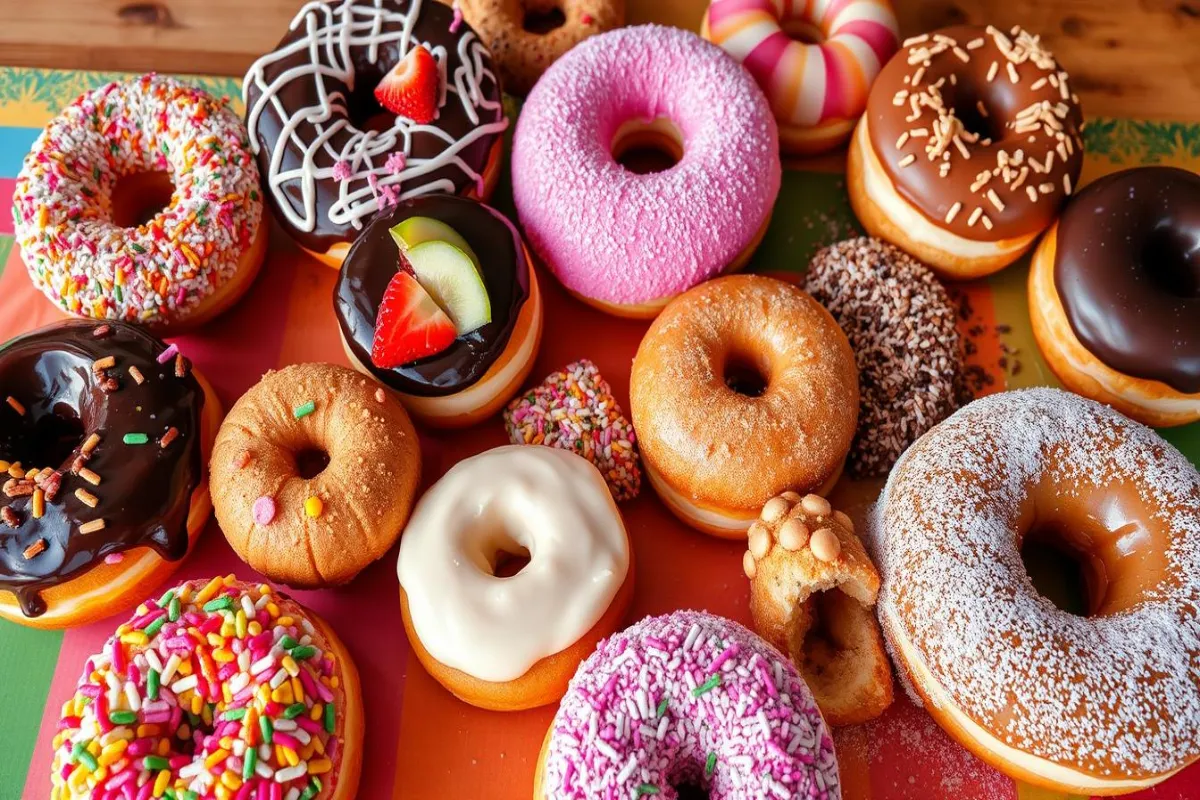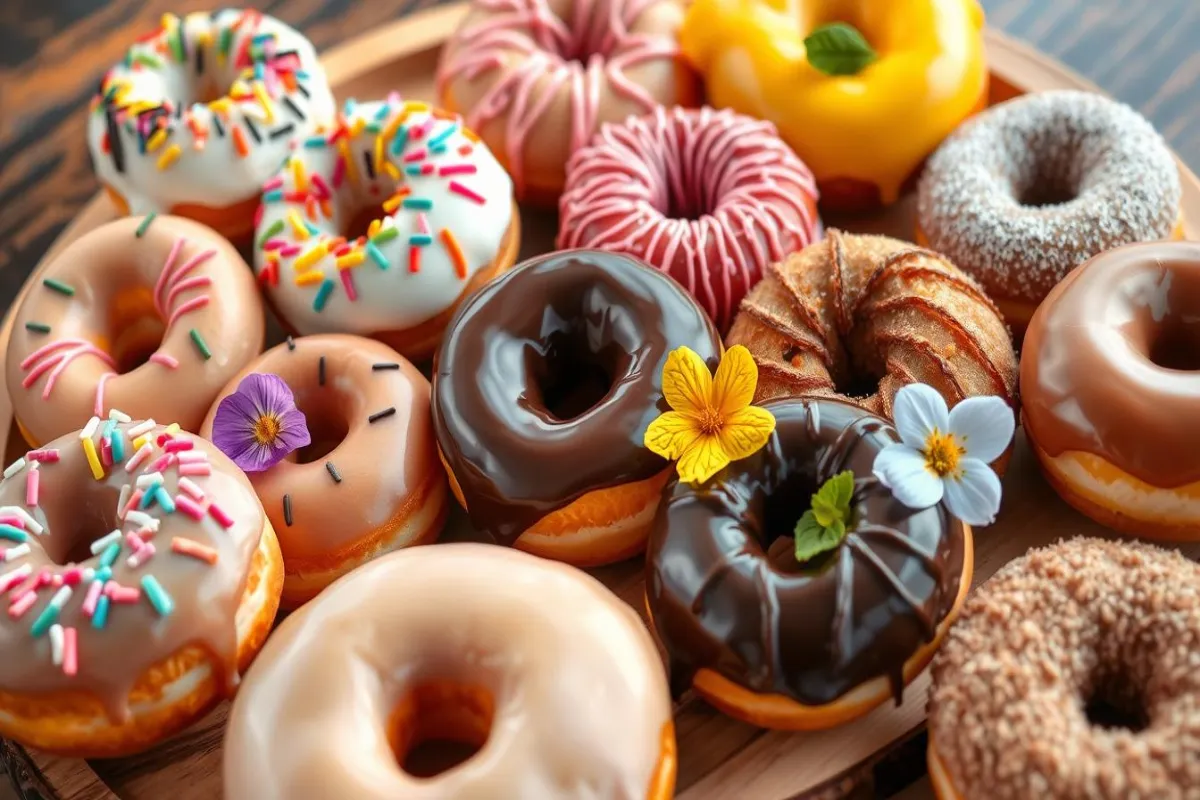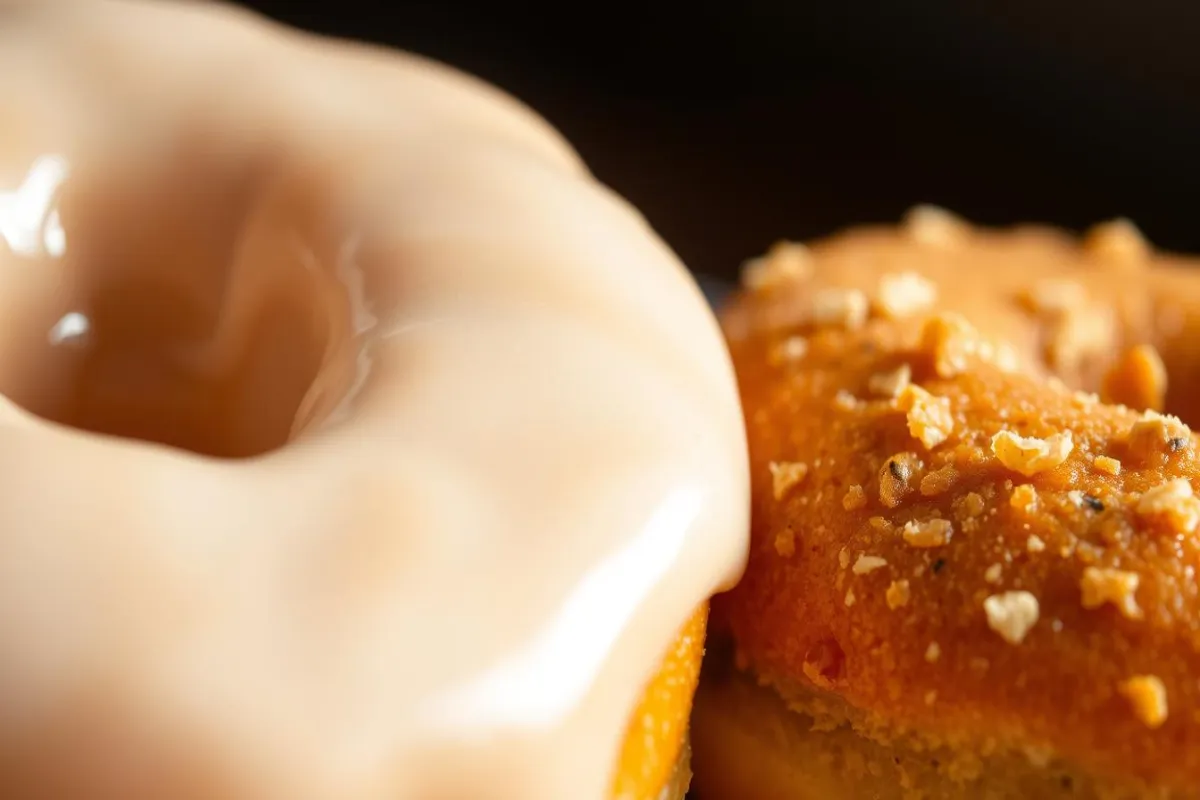People around the world love donuts, but did you know that there are different types of donuts, each with a unique taste and texture? The two most popular and widely consumed varieties are the yeast donut and the cake donut. Although both share the same circular shape and delicious taste, they differ significantly in ingredients, preparation methods, texture, and flavor. In this article, we explore the differences between a cake donut and a yeast donut, highlighting what makes each variety special and why you might prefer one over the other.
1. Introduction to Donuts
The word “dough” is believed to have originated from the Dutch term “oily cake,” pointing towards its deep-fried nature. Donuts, whether in their yeast or cake form, are always a fried treat, but their ingredients and preparation methods are what truly distinguish them. Today, we explore the differences and help you decide which one best suits your preference.
If you are curious about the history of donuts and their origin, the evolution of donuts can be traced back to Dutch settlers in New York during the 17th century. The Dutch settlers brought with them their traditional recipes for olykoeks, or “oil cakes,” which eventually evolved into the donuts we know today. To learn more about the history of donuts, you can check out the reference for a more in-depth exploration.
2. A Brief History of Cake and Yeast Donuts
Yeast Donuts have been enjoyed for centuries, with roots tracing back to fried dough recipes from ancient Rome and North America. Bakers make this type of donut using dough leavened with yeast, which gives it a fluffy, light texture. Yeast donuts are famous for their pillowy softness, achieved by allowing the dough to proof and rise, resulting in a classic donut with a light, airy feel. Bakers often fill yeast donuts with sweet creams, jams, or custards, making them a popular choice for many donut lovers.
Cake Donuts became popular in the early 20th century after the invention of baking powder in the mid-19th century. Bakers found a simpler and faster way to create leavened pastries without waiting for the dough to rise. They make cake donuts with a batter similar to traditional cake batter, resulting in a denser, more cake-like texture. As a convenient alternative, cake donuts appeal to those seeking a more substantial treat. Using baking powder as a leavening agent gives cake donuts their characteristic crumbly and tender texture. Learn more about baking powder and how it works as a leaving agent.

3. Ingredients Comparison
The primary distinction between a yeast donut and a cake donut lies in their ingredients:
- Cake Donuts: The batter for cake donuts includes flour, sugar, eggs, milk, and baking powder. The mixture is similar to that of a traditional cake, hence the name. Baking powder, as a chemical leavener, helps give the donuts their distinctive cake-like structure without the need for yeast fermentation. Cake donuts often also include flavorings such as vanilla extract, nutmeg, or cinnamon, giving them a richer, more complex flavor profile.
- Yeast Donuts: The dough for yeast donuts is made from flour, sugar, eggs, milk, butter, and yeast. yeast acts as the primary leavening agent, causing the dough to rise and form an airy, light texture. Yeast donuts are similar to bread-like dough, which requires time to proof and develop. The proofing process allows the yeast to ferment, creating air pockets that give the donuts their fluffy texture. The addition of butter and eggs provides richness, while the fermentation process imparts a subtle, slightly tangy flavor.
4. Differences in Preparation
The process of making a cake donut versus a yeast donut differs significantly.
- Cake Donuts are made with a batter rather than a dough. The batter is mixed until smooth, shaped, and then fried at a lower temperature compared to yeast donuts. The lower frying temperature allows the batter to cook thoroughly while developing a crispy exterior. Cake donuts are often made using a donut cutter or by piping the batter into molds, which helps create their distinctive shape. Once fried, cake donuts can be coated with sugar, cinnamon sugar, or frosting, making them a versatile treat.
- Yeast Donuts are made from a dough that must be kneaded and left to proof for several hours to allow the yeast to activate. This proofing process is crucial for creating the fluffy, airy structure of a yeast donut. After proofing, the dough is rolled out, shaped, and fried at a higher temperature to quickly form a golden, crispy exterior while keeping the inside tender and light. Yeast donuts require careful temperature control during frying to ensure that they cook evenly without becoming too greasy or overdone.
5. Texture and Taste Differences
The texture and taste of cake donuts and yeast donuts differ significantly due to their distinct preparation methods and ingredients.
- Texture:
- Cake Donuts: Cake donuts are denser and have a firmer texture, with a cake-like crumb that feels substantial when you bite into it. The frying process also gives them a crispy outer layer, which contrasts nicely with the soft interior. Their texture is often described as tender and crumbly, making them ideal for dunking in coffee or milk.
- Yeast Donuts: Yeast donuts are soft and airy, with a pillowy texture. The yeast in the dough creates air pockets that give them their characteristic lightness. The dough is elastic and slightly chewy, providing a satisfying bite. Yeast donuts are often compared to brioche due to their light and fluffy structure.
- Taste:
- Cake Donuts: Cake donuts are less sweet compared to yeast donuts and have a rich, buttery flavor. Their use of baking powder adds a slight tanginess, and they tend to be more flavorful on their own. Cake donuts can easily take on added flavors, such as cinnamon, nutmeg, or chocolate, which enhances their overall taste.
- Yeast Donuts: Yeast donuts have a mild, sweet flavor, with a hint of fermentation from the yeast. They rely heavily on glazes, icings, or fillings to enhance their sweetness. The fermentation process gives yeast donuts a subtle complexity, while the addition of glazes and fillings such as jelly, custard, or chocolate brings an extra layer of indulgence.
6. Types and Variations of Donuts
Both cake and yeast donuts come in various types and flavors, allowing for creativity and variety.
- Cake Donuts Variations: Cake donuts are incredibly versatile. They can be flavored with chocolate, blueberries, pumpkin spice, or even apple cider. Cake donuts can also be baked instead of fried, making them a slightly healthier option for those who prefer to avoid deep frying. Popular variations include red velvet cake donuts, apple cider donuts, and old-fashioned donuts, which have a signature cracked surface and crispy exterior.
- Yeast Donut Variations: Yeast donuts often come as classic glazed rings or filled with jelly, custard, or cream. Their light, airy structure makes them ideal for fillings, as the dough can easily hold a variety of sweet creams and jams. Yeast donuts are commonly seen in flavors such as glazed, maple bar, and Boston cream, and they can also be topped with sprinkles or chocolate ganache for added sweetness and visual appeal.
- French Cruller: A popular variation often mistaken as a separate category of donuts, the French Cruller is a type of yeast donut with a delicate, egg-like flavor and a unique ridged appearance. French croissants are made with pâte à choux, a type of dough used in making cream puffs and eclairs, which gives them their signature light and airy texture.
7. Cultural Significance and Popularity
Both cake and yeast donuts have cultural significance and enjoy immense popularity across different regions. For example:
- Yeast Donuts are a staple at popular chains like Krispy Kreme and Dunkin’. The classic glazed yeast donut has a cult following thanks to its light and fluffy texture that nearly melts in your mouth. Yeast donuts are often associated with indulgence and are frequently featured at events like fundraisers, where their classic appeal makes them a popular choice.
- Cake Donuts are commonly found in smaller, independent donut shops. They are especially popular in the fall and winter seasons, when flavors like pumpkin spice and apple cider are most sought after. Cake donuts are often seen as a nostalgic treat, evoking memories of homemade donuts enjoyed during the holidays or at family gatherings.
8. Nutritional Differences
While neither cake donuts nor yeast donuts are particularly low-calorie, there are some nutritional differences to consider.
- Calories: Cake donuts are generally higher in calories due to their density and ingredients. The use of baking powder and eggs makes them heavier, and their texture traps more oil during frying. A typical cake donut can have anywhere from 250 to 400 calories, depending on its size and toppings.
- Fat Content: Yeast donuts, though lighter, can have a higher fat content if they are filled with creams or fried in certain types of oil. However, due to their lighter structure, they tend to absorb less oil during frying compared to cake donuts. Yeast donuts generally have around 200 to 300 calories, but fillings and glazes can significantly increase their calorie and fat content.
- Healthier Option?: Some people consider cake donuts the healthier option because they can be baked instead of fried, reducing fat content. Meanwhile, yeast donuts tend to be lighter but may have more sugar when glazed or filled. If you are looking for a lower-calorie option, a plain yeast donut without any glaze or filling might be the best choice.
9. Commonly Asked Questions
What is the major difference between a cake donut and a yeast donut?
The key difference is in the leavening agents: cake donuts use baking powder, while yeast donuts use yeast. This results in cake donuts being denser and yeast donuts being airy and fluffy.
Which type of donut is healthier?
It depends on the method of preparation. Baked cake donuts might be healthier due to less oil absorption, while yeast donuts may be lighter but higher in sugar.
Why are cake donuts denser than yeast donuts?
Cake donuts use batter with baking powder, which does not create the same amount of air pockets as yeast. This results in a denser texture.
Can cake donuts be baked instead of fried?
Yes, cake donuts can be baked, which reduces their calorie and fat content.
Why are yeast donuts called “raised” donuts?
Yeast donuts are called “raised” donuts because they need to be proofed to allow the yeast to activate and cause the dough to rise.
Which type of donut stays fresh longer?
Cake donuts tend to stay fresher for longer compared to yeast donuts, which can dry out quickly. Cake donuts maintain their texture for several days, while yeast donuts are best enjoyed fresh due to their airy structure.
10. The Debate: Which is Better?
The debate between cake and yeast donuts ultimately comes down to personal preference:
- If you enjoy a dense, buttery, and substantial donut, you may prefer cake donuts. Cake donuts are perfect for those who appreciate a firmer texture and a more filling treat that pairs well with coffee or tea.
- If you prefer a light, airy, and melt-in-your-mouth texture, then yeast donuts might be your favorite. Yeast donuts are ideal for those who enjoy a soft, fluffy bite with a variety of sweet glazes and fillings.
11. Conclusion
In the great debate between cake donuts and yeast donuts, the true winner is subjective. Both types have their own unique qualities, from the ingredients and preparation methods to the texture and taste that appeal to different preferences. Whether you prefer a dense, filling cake donut or a light, fluffy yeast donut, there’s a donut out there for everyone. The best way to decide is to try them both and see which type delights your taste buds the most.
So, are you Team Cake Donut or Team Yeast Donut? Let us know which type you prefer and why!

